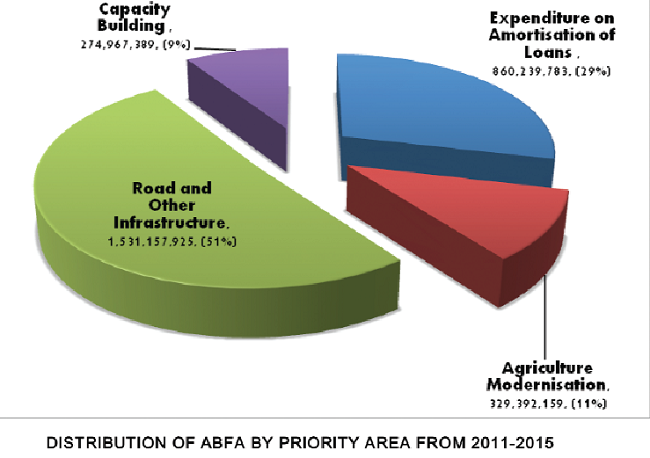The Public Interest and Accountability Committee (PIAC) has called on the government to outline areas and projects on which oil revenues will be expended.
The committee was of the view that the government consistently spent funds allocated to the Annual Budget Funding Amount (ABFA) on projects that were not part of the four priority areas.
The four priority areas as enshrined in the Petroleum Revenue Management Act (PRMA) include roads and other infrastructure, amortisation of loans contracted for oil and gas infrastructure, modernisation of agriculture and capacity building.
PIAC in its 2015 annual report, therefore, recommended to the government to focus on its priority areas to avoid unnecessary expenditure.
“PIAC has observed in the past five years that the government does not adhere to the selected priority areas and tends to spend the ABFA on other areas that are not strictly under the four priority areas. PIAC is therefore calling for clear guidelines and definitions of the selected priority areas to avoid amorphous expenditure,” the report said.
The report, for instance, cited the Obogu-Ofoase-Gyadem–Bodwesango-Adansi Asoka road (KM 7-64.3) as the only road out of the 181 roads to benefit from oil revenues and been funded from the ABFA for five years, up to the tune of GH¢23.38 million.
PIAC’s concerns with the way the ABFA has been utilised dates back to its 2013 report, when it gained access to the detailed list of projects funded with the ABFA. Unfortunately, the committee’s recommendations on this issue appears to have fallen on deaf ears since the Ministry of Finance continues to allocate small portions of ABFA Funds to several projects in several sectors.
“It is important to stress that the concerns being expressed by PIAC regarding the use of the ABFA are not held by the committee alone but represent the views held by the majority of the cross-section of the Ghanaians PIAC has interacted with in their public engagement sessions and is also consistent with the letter and the spirit of Section 21 of the PRMA that articulates the purpose of the ABFA, which includes using the ABFA to maximise the rate of the economic development,” the report said.
ABFA allocations in 2015
A total of GH¢1,086.28 million (USD$292.98 million) was allocated to the ABFA in 2015 compared to the US$ 409.07 million (GH¢1,215 million) disbursed in 2014.
GH¢483.35 million, representing 43 per cent of revenues in the ABFA in 2015 was spent on Roads and Other Infrastructure. GH¢439.23 million (39.07per cent) was used to amortise loans contracted for oil and gas infrastructure while GH¢142.07 million, representing 12.64 per cent, was spent on various capacity-building interventions.
The agriculture modernisation priority area received GH¢59.54 million (5.30 per cent) which was used for various initiatives aimed at modernising agriculture.
According to the report, 33 roads and road-related ancillary projects were supported by the 2015 ABFA at an average cost of GH¢2.34 million per project.
It also added that 21 one of the beneficiary projects were new, bringing to 181 the number of road projects that have been funded with the ABFA since 2011. Also, 12 projects that had received funding at least once between 2011 and 2014 were also supported.
Capacity building still undefined
According to the committee, the government has failed to clearly define what constitutes capacity building in the oil and gas sector, thereby making it easy for funds allocated to this priority area to be diverted.
“PIAC holds the view that what constitute capacity building as far as the utilisation of ABFA Funds is concerned ought to be defined so as to ensure that funds allocated to those priority areas are put to maximum use,” the report said.
It also added that “it is also important for targeted allocations to be made to fund direct capacity-enhancing initiatives in the oil and gas sector to help bolster indigenous expertise and know-how in the oil and gas industry as stipulated in the local regulations.”
In 2015, GH¢142.07 million was allocated to the capacity-building priority area. Out of this, disbursements totalling GH¢94.74 million (66.68per cent) was used to fund multiple social interventions including capitation grant, feeding grant, examination subsidies and the progressively free senior high school policy in the educational sector.

